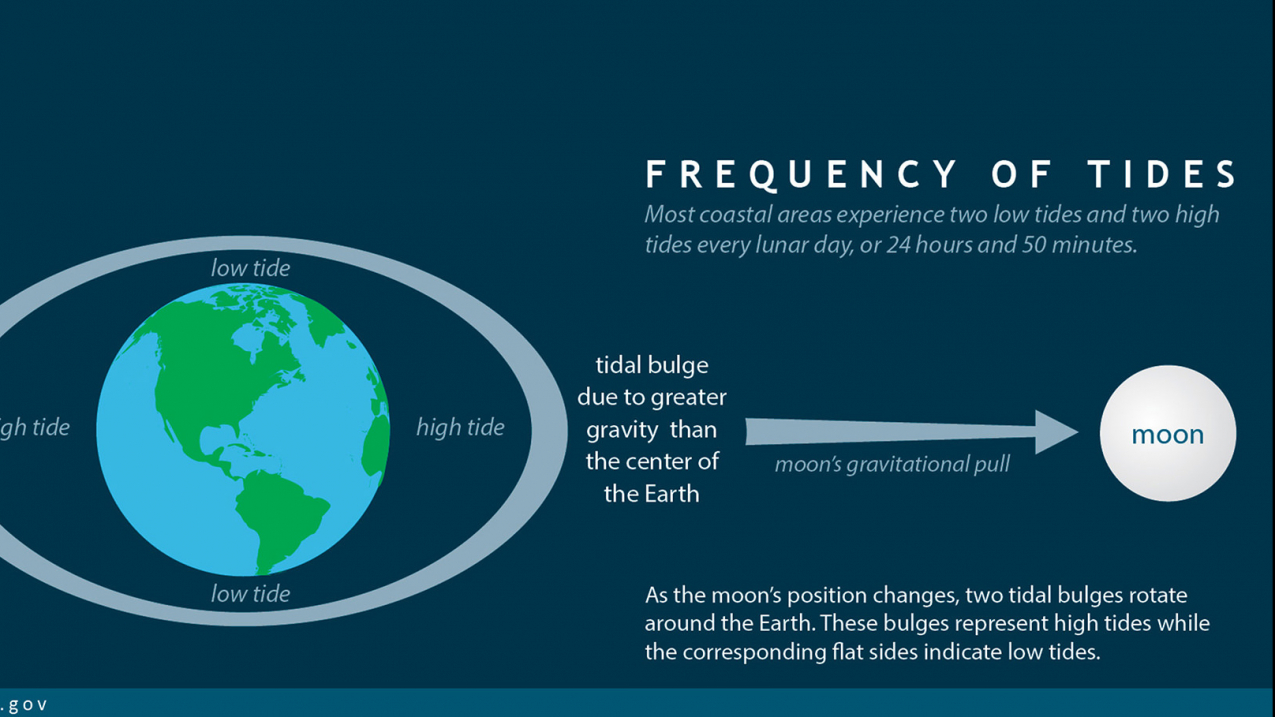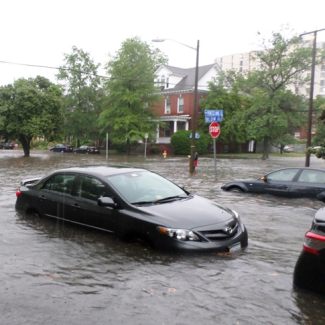Keep exploring
Find even more resources on tides in our searchable resource database.
Knowledge of the times, heights, and the flow of tides is of importance in a wide range of situations such as navigation through coastal waterways; construction of bridges, docks, breakwaters, and deep-water channels; and for fishing, boating, surfing, and water sports.

Most coastal areas experience two low tides and two high tides every lunar day, or 24 hours and 50 minutes. (Image credit: NOAA National Ocean Service)
Keep exploring
Find even more resources on tides in our searchable resource database.
The word "tides" is used to define the rise and fall in sea level resulting from the gravitational attraction of the moon and the sun. The result of this pull is a bulge in the ocean water almost in line with the position of the moon; one bulge toward the moon and one on the opposite side of the earth, away from the moon. When we observe the tides what we are actually seeing is the result of the earth rotating under this bulge.
Report projects a century of sea level rise in 30 years
The most familiar evidence of the tides is the observed recurrence of high and low water on the coastline. These tides usually, but not always, reach a high and low level typically about six hours apart. The shape of the coastline, the local depth of the water, and the ocean floor topography also significantly impact the height and the timing of the tides.
EDUCATION CONNECTION
The resources included in this collection support teachers who are instructing students about the causes of tides, but also it includes resources about the impacts of tides on coastal ecosystems and tides as an energy source. Some of the websites allow the teacher and student to view and use real time, historic, and predicted data for a large number of tide stations along the coast and in the Great Lakes. Lessons are included that will provide ideas for ways to use this data with students. Changing tides have significant impacts to the ecosystems along the coast. We have included resources that will help teach about the impacts of tides on some of these ecosystems.
Keep exploring
Find even more resources on tides in our searchable resource database.



